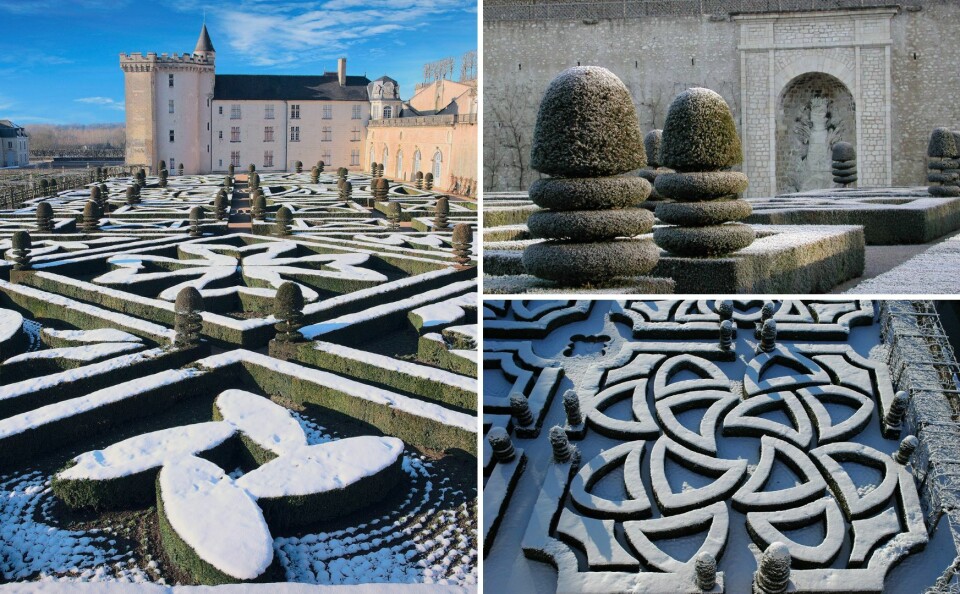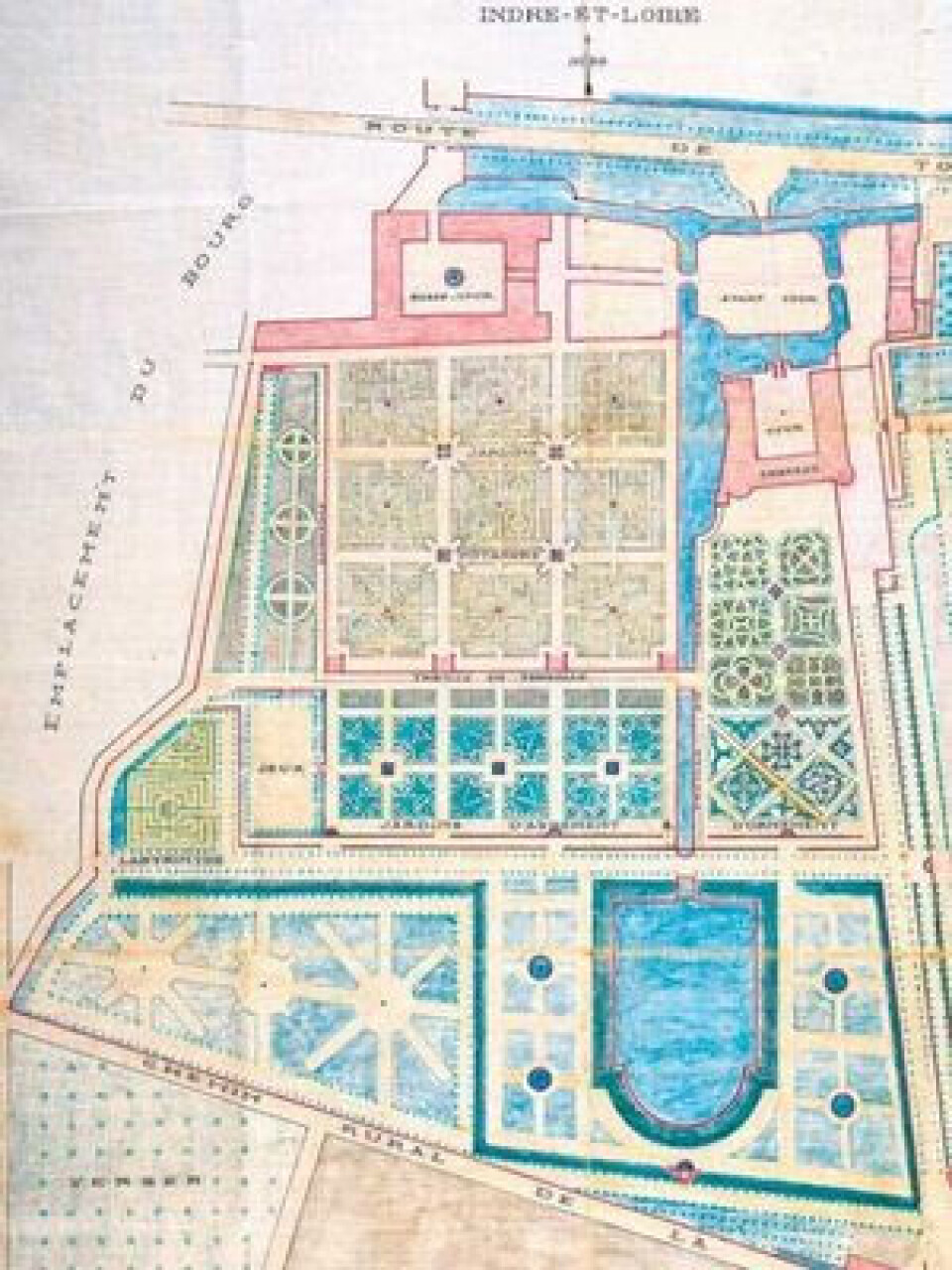-
The origins and meaning of tirer les marrons du feu
As Christmas approaches, we look at a phrase to describe someone who takes advantage of a situation
-
All wrapped up for Christmas: how to protect your plants in France this winter
Discover effective methods to shield your garden plants from winter frost and cold, ensuring their survival and health through the chilly months
-
Preparing your French garden for the festive season and the year ahead
Christmas veg harvest, sustainable Christmas tree options and great deals on outdoor furniture for next summer
France’s finest chateaux gardens and parterres are magical in December
Without flowers the structural beauty shines through, so wrap up warm and visit these gardens from the Loire Valley to Versailles

December is the perfect month to visit and be inspired by the intricate shapes and bone structure of formal gardens, without the distraction of summer flowers.
This month, the fifth anniversary of ‘Christmas in the Land of the Châteaux’ in the Loire Valley, promises a Christmas shiver up the spine, thanks to a thousand lights and a myriad of giant Christmas trees boasting over 2,300 ornaments, wild-wood grottos in the attic and sugar mice galore!
Symbolism in Château de Villandry parterre
Do visit the most famous potager garden in the world at the Château de Villandry, particularly if you have only seen it in the summer.
In common with six other Loire Valley chateaux, Villandry opens on only one December night, Tuesday 28 (until 20:00), with the gardens around the chateau lit in celebration of the season.
You may not be lucky enough to see those parterres with a dusting of snow or frost, but the effect should be magical all the same.
The grounds are, of course, not the original Renaissance garden of the chateau that was built by Jean de Breton, Francis I’s finance minister, back in the sixteenth century.
It fell to a new owner, Joachim Carvallo and his American wife Ann Coleman to restore, between 1908 and 1918, a ‘might-have-been’, fairy-tale version.
Read more: The French potager is 'so much more than a kitchen garden'
Joachim’s assiduous research compared the results of the real archaeological dig he commissioned in the grounds with famous contemporary publications and guides to design for the grandest French gardens of the period.
Carvallo’s prize was a totally convincing Renaissance parterre, including the symbolism with which these gardens were always imbued – symbolism that would have been a fitting subject for contemplation when viewing from the windows of the chateau, or while taking gentle noble exercise within the broderie of the design.

Joachim Carvallo’s plan for the garden, dated 1932; Image: Château de Villandry
Thus, there are three main symbolic terraces at Villandry: the famous potager at the lowest level symbolises the body, the Jardin d’ornament symbolises the mind and, highest of all, the Jardin d’eau symbolises the soul.
Perfection every day of the year
The nine intricately designed squares of the potager are the ‘point d’orgue’ of the whole design. Some 120,000 vegetables are cultivated here annually, of which 70,000 are propagated on site. Sadly, very few are ever actually eaten – it would be too ‘wounding’ to the overall design to actually destroy it for practicalities.
The pattern is changed twice a year, with one design persisting from March to July and the second from July to December.
Henri Carvallo, great-grandson of Joachim and current owner, assures me that the ornamental cabbages, cardoons and leeks of the late year’s intricate planting will still be visible from the windows of the chateau in December.
In order to ensure this perfection on every day of the year, and in a happy echo of one of the original purposes of a parterre, Mr Carvallo makes a daily tour of the grounds: ‘It is a good exercise and very important to check all the details and note what needs to be corrected... I also do a full tour with the head gardener once a week.’
The greenhouses are not open to the public but, I am told, you can come close enough to press your nose against the glass and appreciate the young plants in spring and early summer.
Read more: Over 100,000 plants grown from seed at Villandry
There is always a potager weekend at the end of September and it is worth noting that Royal Horticultural Society members have free entry on certain days in September also (check dates before visiting).
Caring for 52 kilometres of box plants
The larger topiary specimens are in yew, a notably problem-free plant, but what, I wonder, has the garden done to control the infestations of box tree moth caterpillars on the 52 kilometres of box plants in situ?
Read more: French garden diary - Boxing clever
Mr Carvallo says: ‘We follow closely the caterpillars and have noticed that the number has decreased in the last five years.’
As a control, in common with most other gardens, Villandry now sprays infestations with Bacillus thuringiensis.
It is just as well that there are 10 gardeners, backed up by an apprentice and interns during the growing season, since the clipping of those box – accomplished twice yearly – takes 300 hours.
Meanwhile, elsewhere, higher on the terraces, the red stems of 1,016 lime trees pruned hard annually may convert you to the peculiarly French practice of pollarding, particularly if their joyful colour is backlit by the December sun.
(Open 9.30am to 5.30pm in December. Gardens only: adults €7.50, children €5, under-8s free. Gardens and chateau: adults €12, children €7, under-8s free.)
Loire Valley’s Château Gaillard is Italian blueprint
Do not become mesmerised by the acknowledged grand masterpieces of the Loire valley and miss out on the little gem that is the Château Gaillard.
Self-styled ‘the most Italian of French chateaux’, this was, in some ways, the fifteenth century blueprint for all the gardens of Renaissance France and also the first place in France to welcome and acclimatise Italian orange trees.
These ‘Jardins du Roi’ were designed by an Italian gardener-monk, dragged back after his Italian campaign by the young Charles VIII of France.
Sometimes called ‘the most famous gardener in Europe’ by his contemporaries, Dom Pacello da Mercogliano created a parterre in the manner of a typical Italian garden of the period.
Christmas celebrations in 2022 will fete the arrival of the orange tree in France and the first orangery here, created by Dom Pacello in 1496.
(Open every day from 11am to 6pm; adults €14, children €12).
As well as Villandry, six further Loire valley chateaux hosting Christmas celebrations and displays are open on special evenings during December until 8 or 9pm: the châteaux of Chenonceau, Azay-le-Rideau, Amboise, Langeais, the Royal Fortress of Chinon and the Royal City of Loches.
Check their websites for further details; all bookings can be made online.
Potager fit for a king at Versailles
Away from the Loire Valley, visit the Potager du Roi at Versailles to enjoy the elegant forms created for maximising fruit production in the ornamental potager, a horticultural art perfected by the French.
This is an art form only truly visible in winter and at Versailles’ Potager du Roi you can admire and appreciate the traditional shapes of pruned fruit that date back as far as the eighteenth century.
It will not surprise you to learn that the French revolutionised this horticultural art by inventing the secateur in the nineteenth century, allowing more precise cuts on softer wood.
(Open Tuesday to Friday in December, 10am to 6pm; Saturdays, 10 to 1pm, €3 from November to March.)
Related articles
Do we need permission to cut down a tree in our French garden?
Open Gardens group offers a warm welcome to all volunteers in France
Open Gardens to visit for autumnal colour in Auvergne and Hérault
























